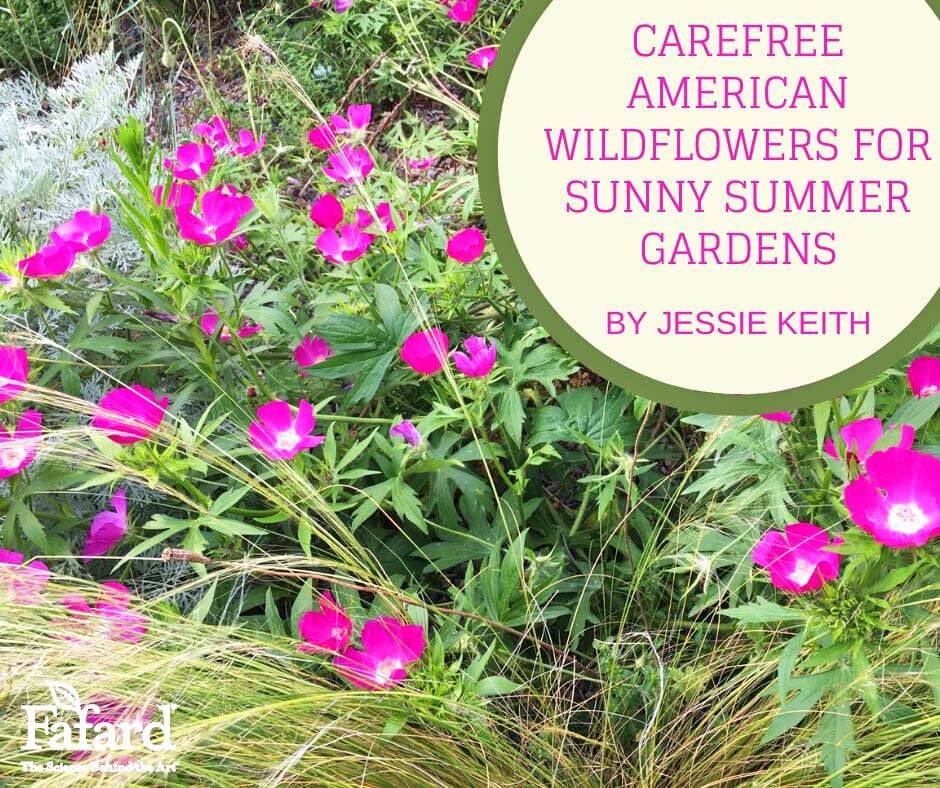

My favorite carefree American wildflowers of summer are untamed, grassland natives that blow in the breeze and bring color to less formal, airier plantings. Their waves of flower color glow on warm days when pollinators are most active. These are flowers that you slow down to look at along roadside meadows but are tame enough for gardens. Each year their seeds gently sprout here and there, creating beds with ever-changing character.
Another welcome trait is that they require no special skills to grow. Plant them in full sun, average soil with good drainage, (Fafard Natural & Organic Compost is a good amendment to add at planting time), give them a little water on dry days, weed as needed, and they will essentially care for themselves.
Plant them together in colorful swaths or among ornamental grasses for a free and beautiful meadow effect. (Click here to learn more about meadow gardening.) Most of these American wildflowers are perennials with one annual added to the mix.
Carefree American Wildflowers

Winecups (Callirhoe involucrata, Zones 4-10) knit and weave themselves around other flowers and grasses to provide hot color with its cups of deep magenta flowers. It has a deep taproot and is quite drought tolerant, reducing the need for supplemental water. Just provide winecups with full sun and a spot of dry to average soil that drains well, and it should be happy. Expect flowers from mid to late summer.

The hairbell (Campanula rotundifolia, Zones 3-7) is named for its delicate bells of violet to pale blue that hang from slender 12- to 18-inch stems. The plants look sleight but will tolerate quite a bit of drought once established. Plant them in full to partial sun, provide average moisture, and watch them produce their pretty flowers from early to late summer.
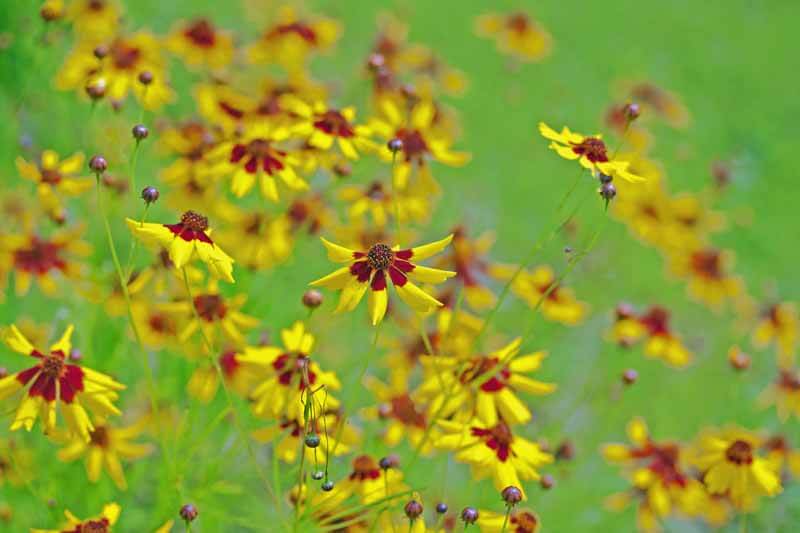
The annual Dyer’s coreopsis (Coreopsis tinctoria) bears lots of small gold or gold and burgundy daisies atop slender stems in the summer months. The 1- to 2-foot plants can sometimes flop. Planting them among upright perennials and grasses helps provide stability. Bees and butterflies love the flowers, and no special skills are needed to grow it. Just sprinkle the seed on worked ground in spring, keep it moist, and watch them sprout and grow. Expect them to gently self-sow. The variety ‘Mardi Gras‘ is extra pretty with its quilled petals of gold and maroon. Dyer’s coreopsis is also valued as a traditional dye plant (click here to learn more).
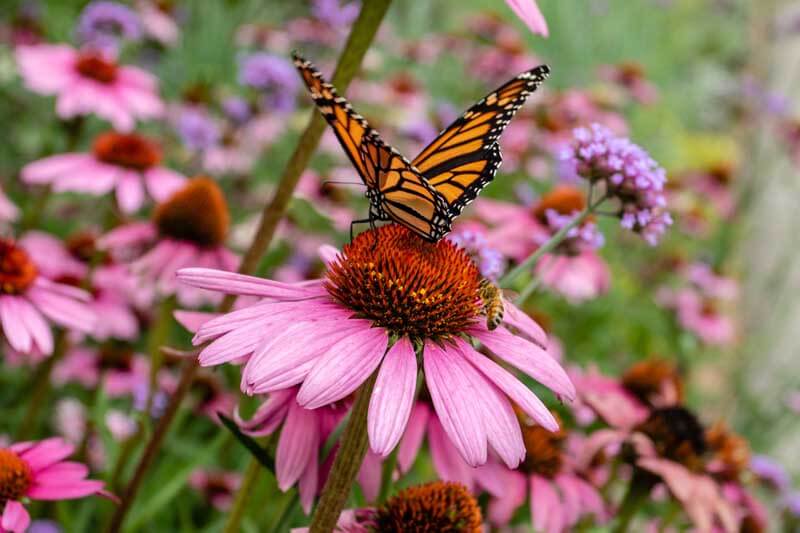
Pale purple and purple coneflowers (Echinacea pallida and E. purpurea, Zones 3-8) are valued for their beautiful large-coned daisies and wildlife benefits; few native wildflowers can beat these. They’re a snap to grow, bloom over a long period in summer, especially if deadheaded, and provide a few seedlings each year. Leave the last wave of autumn seedheads up to dry and feed winter birds.
Purple coneflower begins to bloom in early summer, has large leaves, bright purple-red flowers with large cones, wide radial petals, and bears many blooms. The wilder looking pale purple coneflower has fewer flowers with drooping lavender-pink petals and slender leaves. But, it has an elegant, untamed look that is appealing in mixed plantings.
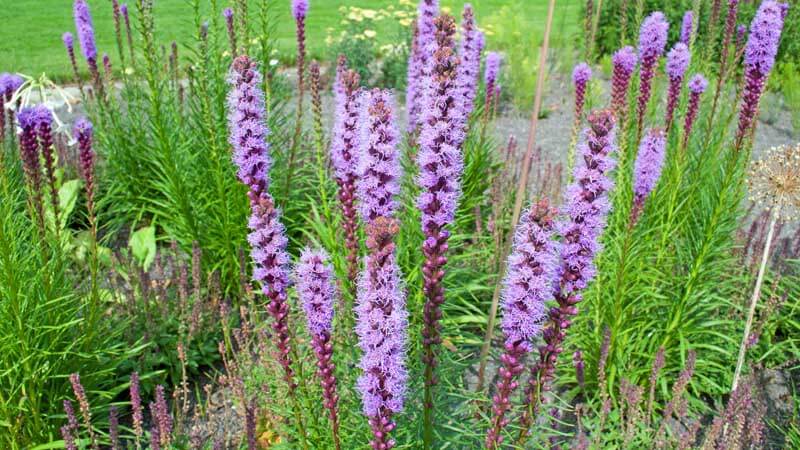
Blazing star (Liatris spicata, Zones 3-11) is a bold bloomer with many tall (3 to 5 foot) spikes of fuzzy purple flowers that are prettiest in midsummer. Hummingbirds, bees, and butterflies line the purple wands when they are in full bloom. When not in bloom, the plants have neat clumps of grassy foliage. Site blazing star in a spot with full sun and average to moist soil, and it will grow beautifully.
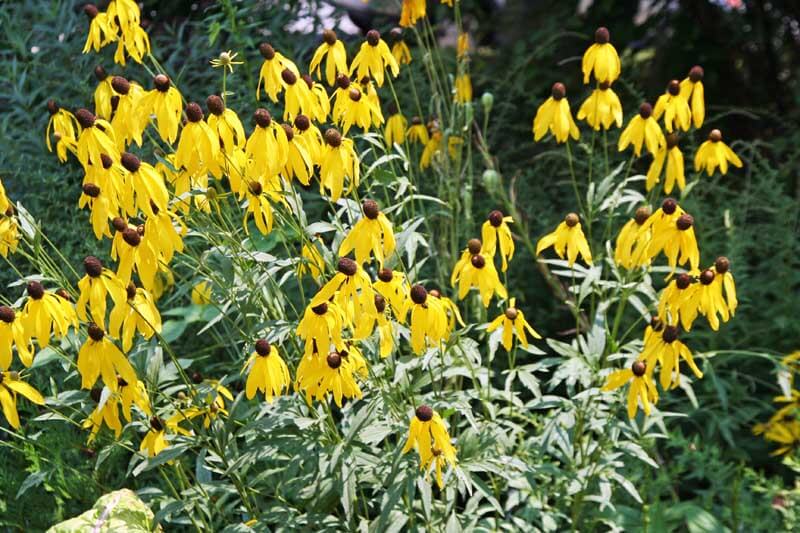
The numerous tall, thin stems of yellow coneflower (Ratibida pinnata, Zones 3-9) can reach up to 4 feet (sometimes more). Its golden daisies are visited by bees and butterflies and have prominent central cones with drooping yellow petals that move in the wind. Plant yellow coneflower in full sun and average soil. Established specimens will tolerate drought. Flowering extends from mid to late summer.
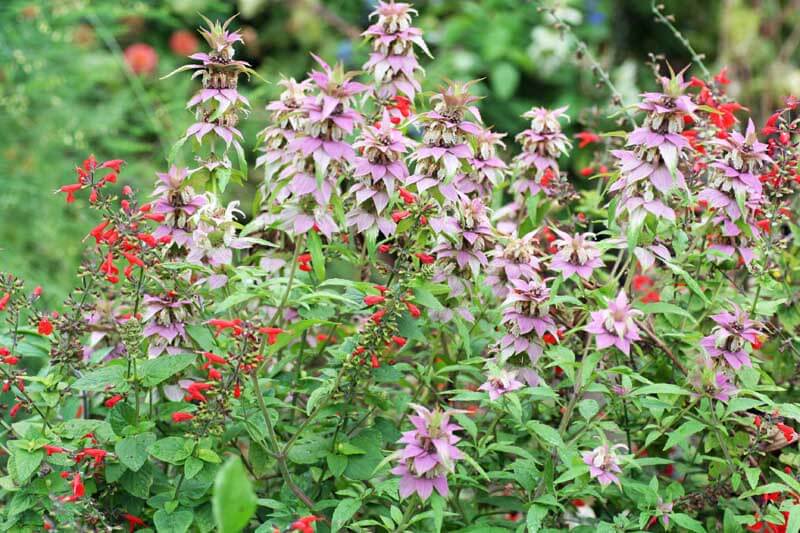
The unusual, tiered pink flowers of spotted horsemint (Monarda punctata, Zones 3-9) have some of the greatest pollinator power around, especially when it comes to feeding bees. The fragrant plants have a long bloom time that can extend from summer to fall. Well-drained soil and full sun are musts. The plants can reach between 2 to 3 feet, and maintain tidy clumps that do not spread, unlike other popular garden Monarda.

Brown-eyed Susan (Rudbeckia triloba, Zones 3-9) is a short-lived perennial known for its drifts of tiny golden daisies with brown eyes that delight the eye from late summer to fall. Ease of growth and a tendency to gently self-sow will ensure it will remain in your garden for years to come. Butterflies and bees are regular visitors to the flowers and finches enjoy eating the mature seeds.
These carefree flowers all grow well together. Plant your favorites in a wild border and watch the summer color, pollinators, and birds light up the garden.

